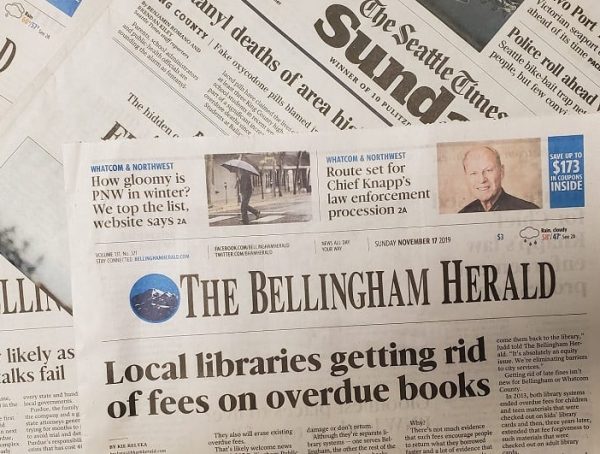Good research can help guide great decision making. NewsLab has created a round-up of some of the most relevant academic research about the newspaper industry. From what happens to your publication when you go fully digital; to a review of what actually gets corrected when someone gets the story wrong; to what’s going on in newspaper design, there’s something for almost everyone here. Read on!
Online only
In the digital news age, many readers have switched from broadsheet to online subscriptions. As a result, some newspapers have ceased their print publications altogether, going online-only. Newsweek in the USA, The Independent in the UK, Finland’s Taloussanomat and Canada’s La Presse are the examples of such shifts.
Neil Thurman, professor of communication studies and media research at the Ludwig Maximilian University of Munich in Germany, and Richard Fletcher of the Reuters Institute for the Study of Journalism at the University of Oxford examined the case of The Independent to understand how its transition affected the audience.
Results showed that the newspaper received a small increase (7.7 percent) in net monthly readers in the year after it went online-only. The number of mobile-only readers also grew significantly since the title went online-only by 31 percent.
However, the newspaper experienced a dramatic drop in the attention received from its British audience after it stopped printing. A year before the switch, its print editions were responsible for 81 percent of the time spent with the brand by its British readers, and the online editions just 19 percent. After the switch, the attention it received via PCs and mobiles changed little. Although there was a rise in attention in June and July 2016 likely due to the Brexit referendum and its aftermath—a pattern observed at other UK news sites—those gains fell away over the rest of 2016, rising again in early 2017.
The Independent has also achieved growth in unique browsers from overseas since its decision to go online-only, amounting to 50 percent higher traffic in the year after it went online-only, compared with the 12 months before.
The results suggest that when newspapers go online-only they may move back into the black, but they also forfeit much of the attention, and potentially impact, they formerly enjoyed.
To read the full text of the study:
Thurman, N., & Fletcher, R. (2018). Are Newspapers Heading Toward Post-Print Obscurity? A case study of The Independent’s transition to online-only. Digital Journalism, 1-15.
Getting it right
The American Society of News Editors reported that the number of copy editors in newsroom dropped from 10,676 in 2002 to 5,675 in 2012. As more newsrooms also seek to consolidate or outsource copy editing, the trend raises questions about errors in modern news media.
A team of researchers from California Lutheran University, Northern Kentucky University and San Diego State University examined four newspapers — The New York Times, the Washington Post, The Wall Street Journal and the Los Angeles Times — to determine what types of errors these newspapers are correcting.
The authors conducted a content analysis to find out the correction characteristics across the newspapers and the relationship between corrected-error type, location, impact and objectivity.
Results showed that the most common corrected-error location was within an article and the most common corrected-error type was a personal reference. Cutlines were the second most common location of corrected errors for The New York Times and The Wall Street Journal.
There were significant relationships between error type, location, impact and objectivity. All types of corrected errors were most common in articles, but those not in articles were mostly related to personal references. Similarly, all types were most likely to be low impact, but those with at least some impact were mostly related to numbers found in articles and non-photo visuals.
To read the full text of the study:
Hettinga, K., Appelman, A., Otmar, C., Posada, A., & Thompson, A. (2018). Comparing and contrasting corrected errors at four newspapers. Newspaper Research Journal, 0739532918775685.
Looking good
Many say that newspaper design is the third element of success for newspapers, after to getting the news first and getting it right. With the printed newspaper’s popularity declining, design has been viewed as an important tool to make print competitive in the crowded marketplace.
David Morris, a doctoral student at the School of Journalism and Communication at the University of Oregon, and Matthew Haught, assistant professor of journalism and strategic media at the University of Memphis, analyzed the front-page design of American newspapers.
The authors downloaded front pages of 453 newspapers from Sunday, March 9, 2014, from the Newseum. Sunday was selected because newspapers that print only on certain days of the week typically print a Sunday edition.
Researchers found that almost all of the newspapers—96 percent—used broadsheet size. They tended to be designed on mostly five- and six-column layouts. Some newspapers also used a grid layout, with no clear column structure.
Newspapers placed their flags, also called a nameplate, centered at the top. Other popular placements included blocked to the left. Most of the newspapers placed promos above the newspaper’s flag.
Almost all of the newspapers used both color photographs and color text in their design.
The rise of social media has newspapers engaging readers with online content. However, only a few placed social media information on their front pages. Designs using both Twitter handles and Facebook pages appeared on only 11 percent of papers.
To read the full text of the study:








